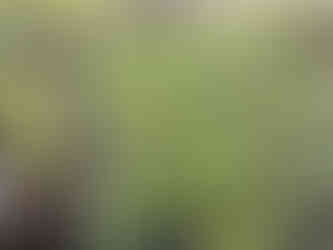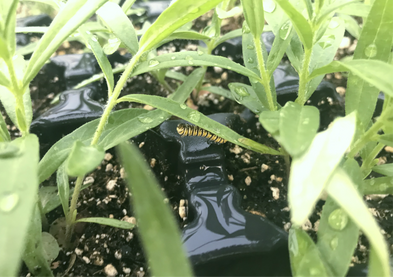Pictures of An Ecosystem
- Michelle

- Sep 5, 2021
- 3 min read
Updated: Sep 12, 2021
The greenhouse this summer was kind of like living in a zoo. Definitely like having our very own ecosystem, which is the point with native plants, right?
If you see our plants at the Farmer's Market or at the Co-op looking a little munched, know that they are Monarch Tested and Approved. As an unexpected side effect of having hundreds of seedlings of four different kinds of milkweed, we ended up raising uncounted dozens of Monarch butterflies all summer long. We didn't do anything other than leave them be. We worried that they might decimate the plants, but the damage was short-lived. We worried that they wouldn't be able to find their way out of the greenhouse when they hatched, but the Monarchs had no problem finding their way out the open doors and sides. Surprisingly, dragonflies don't seem to be as smart and kept getting suck in the peak of the greenhouse where we couldn't reach them to direct them out.
We also had plenty of other caterpillars - on strawberries and grasses and pussytoes with webs of silk that probably were Painted Lady or American Lady caterpillars. None of them were as striking as the Monarch hoard and I forgot to take pictures.
Some of the caterpillars fell to predators - mice and spiders and insects. But those are part of our little ecosystem too and are included later (fishing spider as big as my hand!). But first:
Monarch Baby Pictures



Monarch Chrysalis Time
When the eating was done, each caterpillar found a sturdy leaf or stem.
Then came the ornaments - Christmas in the greenhouse:
And finally -

Fall is Planting Time!
Before we get to the predators, I'll just throw out the reminder that it's not too late to plant milkweed this season. If you plant now, your plants will be less stressed in the cooler, wetter weather, and be able to get their roots down for a jump start on the spring. Plus, you probably won't have to water much! Roots will continue to grow until the ground is nearly frozen - for weeks or months past first frost, depending on the year. And, they will be growing before the ground is ready to be worked in the spring. Plant some Butterfly Milkweed, Swamp Milkweed (no swamp required), Whorled Milkweed, or good old fashioned Common Milkweed this fall and the fresh shoots will be ready for the spring Monarchs. Our Monarch collection is here.
The Circle of Life
Healthy ecosystems need predators.
First came the amphibians. Then came the garter snakes (not pictured).
Then came the rodents (and more snakes). We found a nest of mice under a tray of Spiderwort. Mom mouse had about six tiny babies that she evacuated from the nest one at a time. Adorable, except that to make room for her nest and get food, she ate a half dozen plugs of Spiderwort from the bottom up, including the plastic. She apparently moved them outside under a tray of Wild Ginger, where I accidentally disturbed them yet again. It looked like three babies had survived to this age. Loki, our Greenhouse Overlord Cat, was very interested in being part of the food chain at that point. Again, we take a hands-off approach to native ecosystem dynamics, but I will note that mice are plant predators and having a companion animal (overlord) that eats mice is not undesirable from our perspective.
And finally, the spiders and their friends. Lots of spiders - jumping spiders, wolf spiders, orb weavers, orchard spiders, and a fishing spider as big as my hand that made me very cautious about moving things around for the rest of the summer, lest we startle each other. Also, lacewings, predatory and parasitic wasps, and the occasional ladybug. Did you know that the American Harvester butterfly has caterpillars that are completely carnivorous? Butterfly caterpillars that only eat aphids! I can't wait to see one of those, but in the meantime, I'll be glad that aphids are not enough of a problem to attract them. The lacewings in particular seemed to do a great job of keeping greenhouse pests, like fungus gnats, to a minimum.
Bonus butterfly picture to ease away from the spiders

You can start (or expand) your very own ecosystem by planting native plants. We will be overwintering our remaining stock, so we still have plenty of plants available. However, I'm sure they would rather spend the winter tucked into your flower bed rather than huddled in a snowbank near our greenhouse. Take advantage of ideal fall weather to give your new native plants a head start for next year. Like they say - if you plant them, they will come, and then you will have your very own ecosystem (fishing spiders not guaranteed).
























































Comments